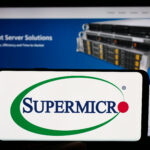Introduction: TPM Provider Merger
Industry consolidation is nothing new in IT maintenance. Rumors of yet another major merger between global TPM providers have many customers wondering what this kind of shake-up really means for them. On paper, TPM provider mergers promise scale and efficiency. In practice, they often bring confusion, shifting priorities, and unanswered questions.
What TPM Provider Mergers Usually Mean for Customers
When two large providers combine, the transition period is rarely smooth. Customers are often subject to:
- Service disruptions: New ticketing systems and coverage models often result in slower response times.
- Lost accountability: Sales reps and service managers you relied on may change roles or disappear entirely.
- Field service breakdowns: Consolidating service delivery teams can lead to real-world mistakes, from missed SLAs to engineers who are unfamiliar with your site protocols.
- Rigid policies: Merged organizations tend to adopt one-size-fits-all models that ignore your specific operational needs.
- Pricing changes: Consolidation frequently brings new contract requirements and minimum spend thresholds.
When these issues pile up, customers are left navigating uncertainty with little visibility into how their maintenance and support will actually function day to day. The good news is, you do not have to wait for problems to appear before taking action. There are practical steps you can take right now to protect your operations and maintain control.
Steps to Take Right Now
- Review your SLA
Know exactly what was promised in terms of response times, coverage hours, and escalation paths, and hold your provider to it. - Confirm your points of contact
If your rep or service manager changes, ask for a full handoff. Document new names, phone numbers, and escalation paths. - Track service performance
Keep tabs on ticket response times, communication quality, and resolution rates. Then, if service dips, you will have proof to act. - Ask direct questions
Do not wait for an email update. Ask how your service, support model, and pricing will change under the new organization. - Benchmark alternatives
Even if you stay put, understand your options. A stable, flexible partner gives you leverage and an exit plan if performance slips. - Check your pricing
If it has been a while since your last renewal, confirm you are paying market rates for proactive, quality support — rather than subsidizing TPM provider merger costs.
Why Flexibility Matters
Large, merged TPMs start to act like OEMs: big, slow, and margin-driven. OSI Global is the only alternative with the same capabilities without the BS. We combine the scale to support global enterprise environments with the flexibility and responsiveness that only a privately owned provider can offer. We answer to our customers, not investors.
How OSI Global Compares
For a closer look at how OSI Global differs from OEMs and other TPM providers, refer to the comparison chart below. It outlines how OSI Global’s approach to service delivery, support, and customer care stands apart in the areas that matter most.
The Bottom Line
Mergers create uncertainty. Customers who stay informed and proactive can minimize disruption and keep control of their infrastructure.
If you are concerned about how your maintenance coverage will be affected by a TPM provider merger, now is the time to explore your options.
OSI Global provides the stability, responsiveness, and customer-first approach that merged providers cannot match.





